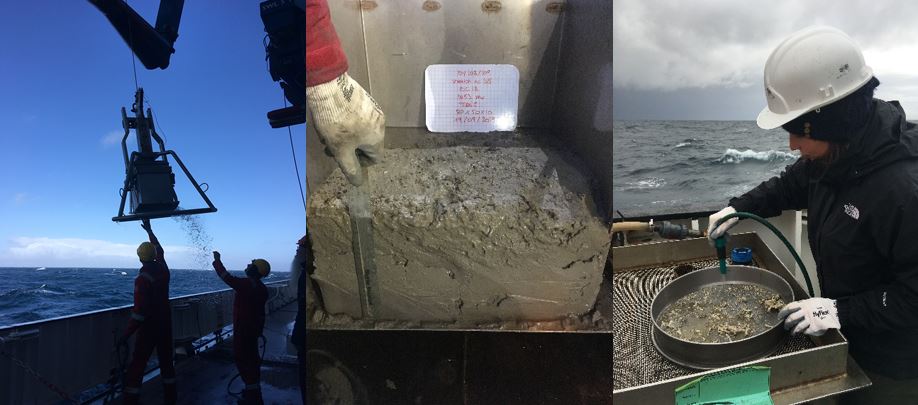After driving for two days with our equipment from the University of Edinburgh we arrived in Southampton ready to join a team of scientists and engineers on a research expedition led by the National Oceanography Centre (CLASS Project) and University of Southampton (BioCam project). Packed with chocolate snacks and positivity, we said our farewells to land for one month and set-off for the Darwin Mounds!

Laura Durán and Laurence de Clippele about to board the RRS Discovery. © Laurence de Clippele
First discovered in 1998, the Darwin Mounds are located northwest of Scotland at 900-1000 m depth. Unfortunately much of the coral was damaged and destroyed by trawling, leading to protection of the area in 2003. Since previous expeditions had collected samples of the macro benthos before (2000) and after the protection (2011), we were eager to get more samples during this expedition!

Image by Huvenne, V.A.I., Bett, B.J., Masson, D.G., Le Bas, T.P. and Wheeler, A.J., 2016. Effectiveness of a deep-sea cold-water coral Marine Protected Area, following eight years of fisheries closure. Biological Conservation, 200, pp.60-69.
After a couple of days of sailing and once the 8m swell had settled (thank you, hurricane Dorian!) we managed to get lots of macrobenthos samples using a box corer. A box corer is a sampling tool that allows quantitative investigations of the benthic micro- and macro fauna without disturbing the sediment surface too much. When the sample is back on deck, we rinse it carefully through a sieve revealing the animals, which we then later identify using a microscope.

(a) Box core coming on deck (b) Content of a successful box core sample (c) sieving the sample to get rid of the mud and sand. © Laurence de Clippele
Laura spent many hours looking through the microscope to identify thousands of animals. The samples contained a very high diversity of animals which included vulnerable species such as sea spiders and Xenophyophores! We found the western Darwin coral mounds to be very biodiverse, while the East Darwin Mound area was crawling with hundreds of Amphipods.

(a) The brown muddy-looking thing is a Xenophyophore with a sea spider sitting on the left and an amphipod on the right. (b) Laura happily identifying the thousands of animals. © Laurence de Clippele
When we weren’t doing science we were enjoying sunsets, dolphins, pilot whales and a lot of amazing food!

Gorgeous sunset and very excited for Scottish mince and tatties. © Laurence de Clippele
By Dr Laurence De Clippele




